The Reach Table Edit command allows the user to edit the reach parameters in one dialog box for common hydrology routing methods. When the user selects this command, a modeless dialog box will be displayed. This dialog box contains an editable data grid listing all the reaches in the current scenario. When the user selects a row in the data grid, the corresponding reach will be zoomed to the Map View (if not visible) and highlighted. In addition, the user can select a reach from the Map View, and the corresponding row in the data grid will be shown selected.
Follow the steps below to use the Reach Table Edit command:
- From the Input ribbon menu, click the Routing Reaches dropdown menu and then select the Reach Table Edit command.
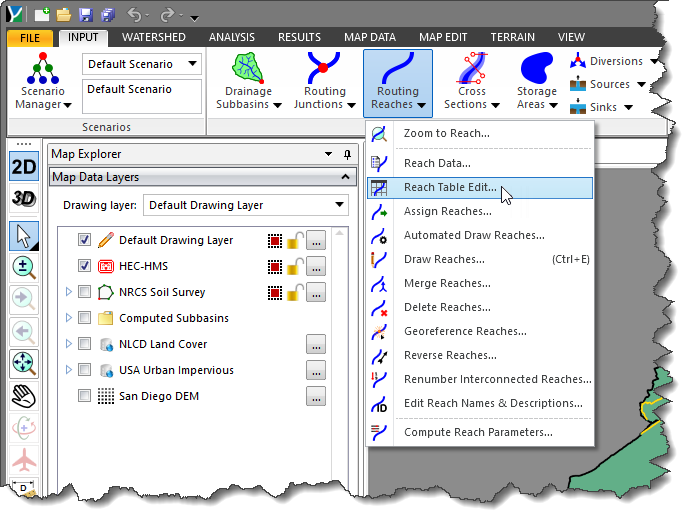
- The Reach Table Edit dialog box will be displayed.
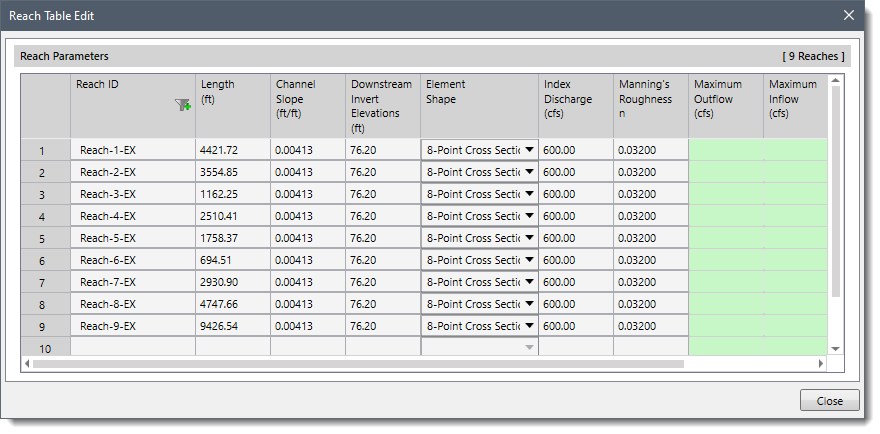
The following sections describe how to use the Reach Table Edit command and interact with the above dialog box.
Reach Parameters
The Reach Parameters section will display the editable data grid columns listing the reach parameters contained in the current scenario. Based upon the selected routing method in the Project Options backstage page, as shown below, the data grid columns listing will be changed.
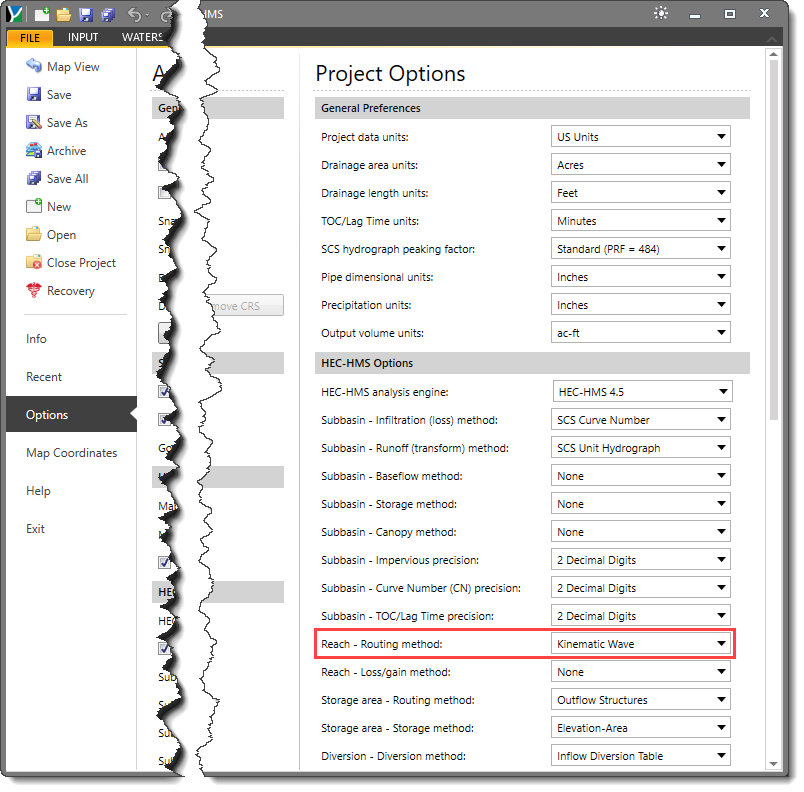
The user can select the following routing methods from the Project Options backstage page and the associated parameters will be listed in the data grid of the Reach Table Edit command.
| Method Name | Data Grid Column Name |
Kinematic Wave
Muskingum Cunge
Normal Depth | Reach ID
Length (ft)
Channel Slope (ft/ft)
Downstream Invert Elevation (ft)
Element Shape
Index Discharge (cfs)
Manning’s Roughness
Maximum Outflow (cfs)
Maximum Inflow (cfs)
Peak Flow Velocity (ft/s)
Peak Stage (ft) |
Lag Time
Lag Time & Attenuation
Muskingum
Modified Puls
Straddle Stagger | Reach ID
Length (ft)
Channel Slope (ft/ft)
Downstream Invert Elevation (ft)
Inflow Lag Time (minutes)
Outflow Attenuation Duration (minutes)
Reach Travel Time (minutes)
Maximum Outflow (cfs)
Maximum Inflow (cfs)
Peak Flow Velocity (ft/s)
Peak Stage (ft) |
Refer to this article in our knowledge base to learn more about reach routing methods.
Exporting Data to Excel or PDF
The user can export the data grid column values to Microsoft Excel or PDF documents. To export data into Excel or PDF, right-click on the data grid column and select Export Table to Excel or Export Table to PDF command from the displayed context menu.
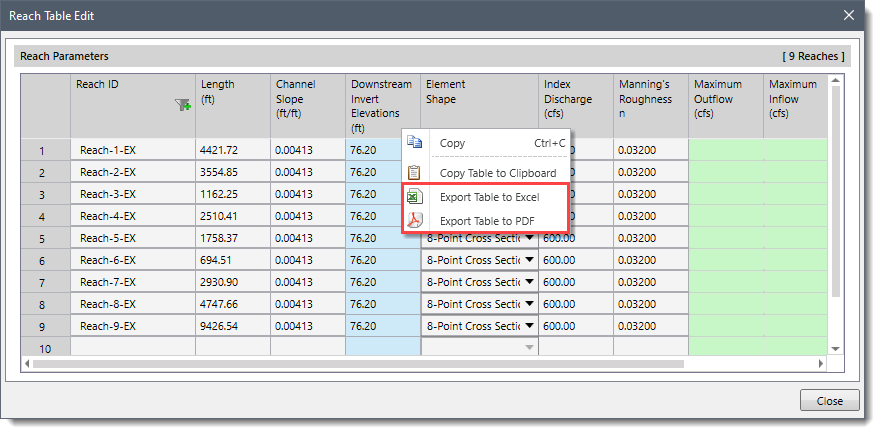
Sending Data to the Windows Clipboard
The user can send the data grid column values to the Windows clipboard. Moving a data grid column value to the clipboard allows those values to be pasted into another software. To transfer the data to the Windows clipboard, right-click on the data grid column and select the Copy Table to Clipboard command from the displayed context menu. The data will automatically be sent to the Windows clipboard.
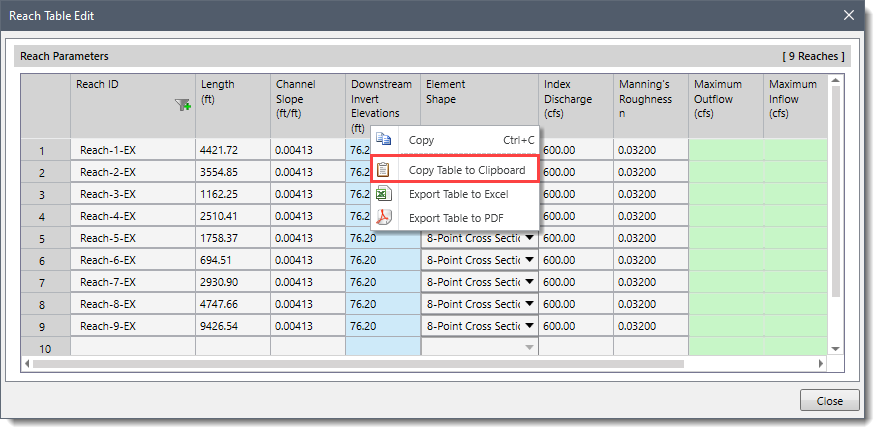
After editing the desired reach parameters for common hydrology routing methods, the user can click the [Close] button to close the dialog box.
